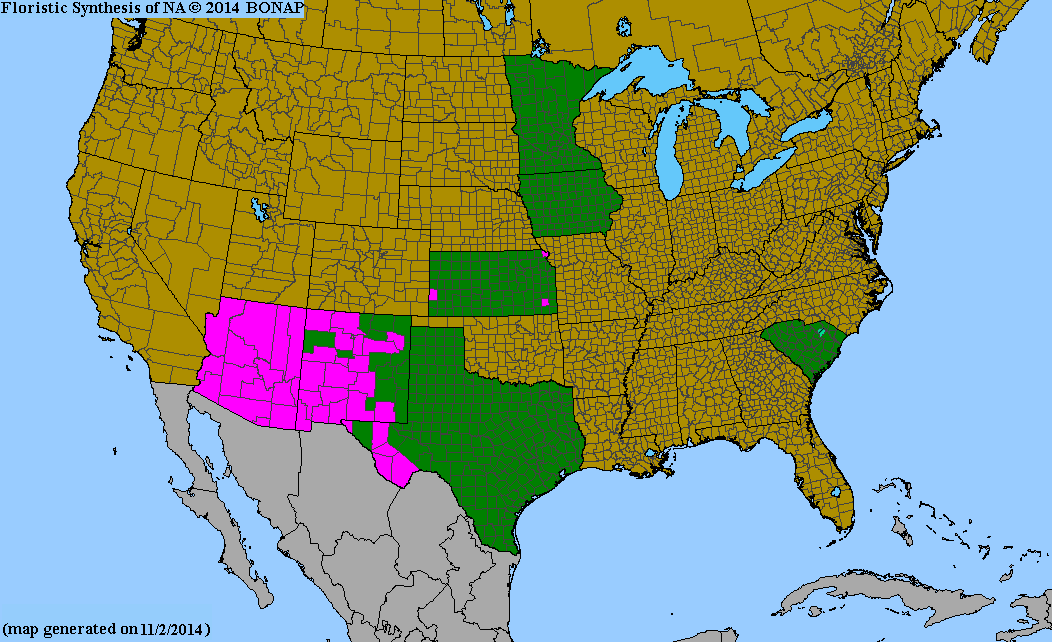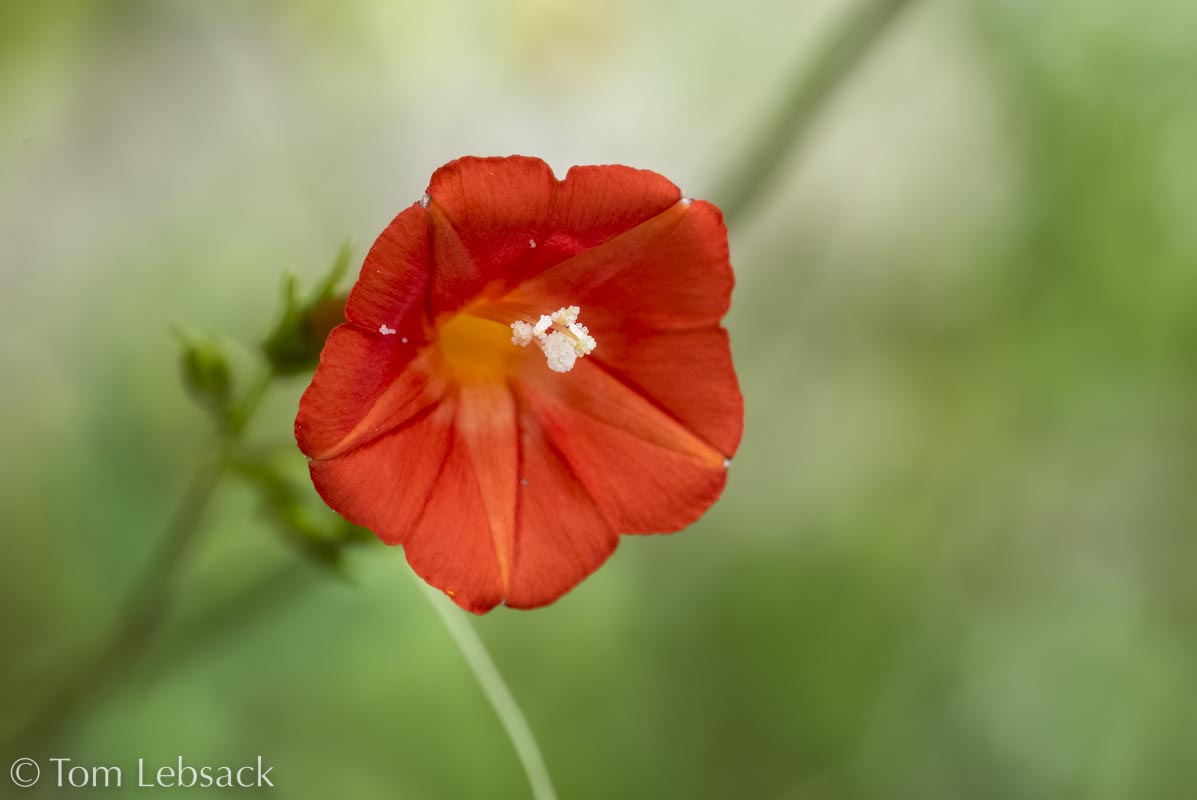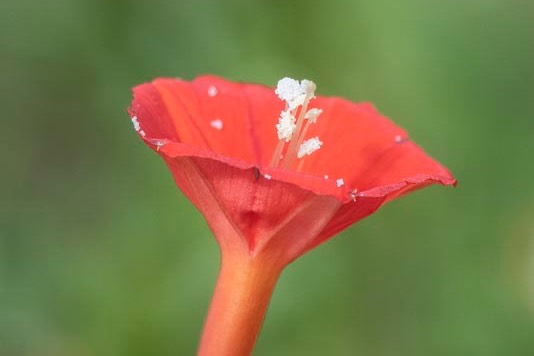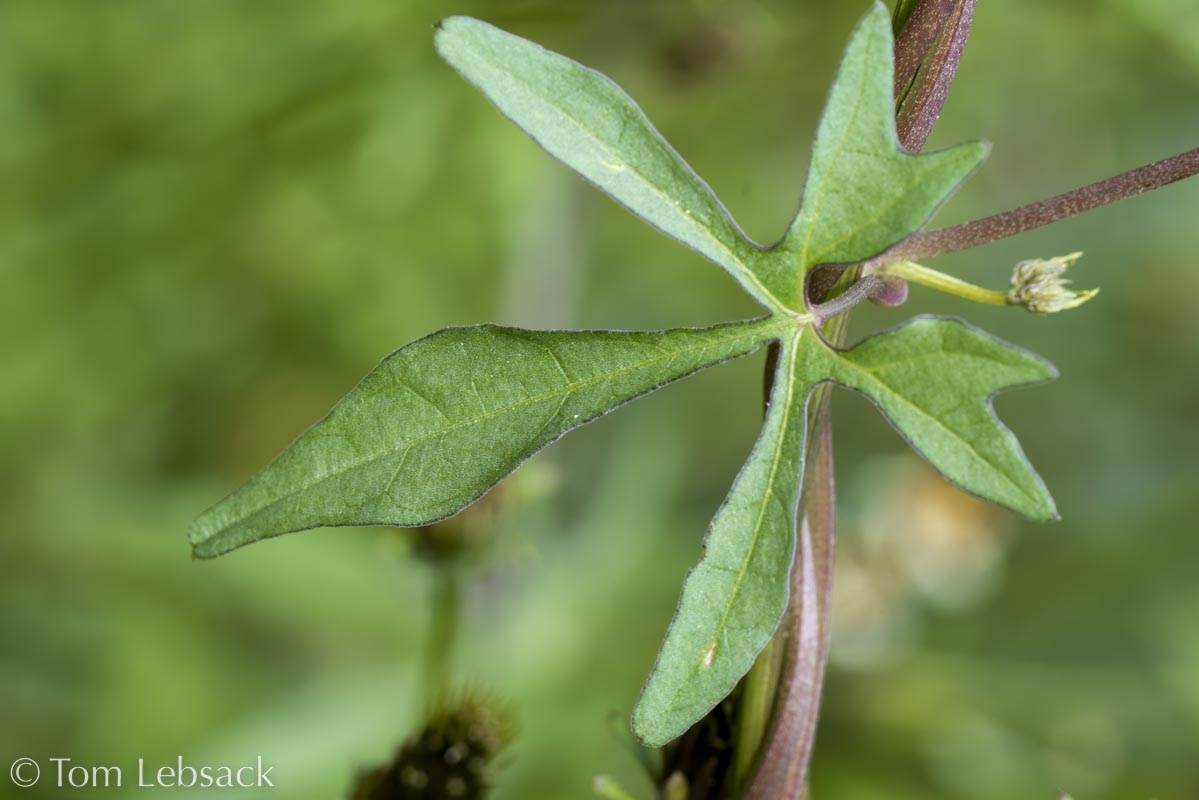Texas Wildbuds
Ipomoea cristulata
(Trans-Pecos Morning Glory
| Scientific Name | Ipomoea cristulata | USDA PLANTS Symbol | IPCR |
| Common Name | Trans-Pecos Morning Glory | ITIS Taxonomic Serial No. | 30772 |
| Family | Convolvulaceae (Morning Glory) | SEINet Reference |
Click Here |
| Description | Habitat: Disturbed areas and canyons; roadsides, scrubland, woodlands; 2,500 to 9,000 ft. Plant: Annual vine with twining stems often growing on other shrubs; mostly smooth herbage. Leaves: Alternate stem leaves lobed or deeply palmately divided into 3 to 5 lobes; blades 3/4 to 4 inches long and 3/8 to 2-3/4 inches wide; slender petioles 3/4 to 3-1/2 inches long; bright green upper surfaces, smooth to covered with soft long hairs. Inflorescence: Bright red trumpet-shaped flowers 3/4 to slightly over an inch long and about 1/2-inch or less across; on pedicels less than 1/2-inch long; 5 sepals 1/8 to 1/5-inch long; protruding stamens with white anthers. Bloom Period: August to October. References: "Manual of the Vascular Plants of Texas" by Correll and Johnston and SEINet. Note: Biota of North America lists I. cristulata as a noxious weed (see map on right); however, it is not listed as such on the Texas Invasives website. |
BONAP Distribution Map Map Color Key Map Color Key |
Texas Status: Native |
Banner photo of Castilleja indivisa and Lupinus ssp. taken along FM 1323 north of Johnson City, Blanco County
© Tom Lebsack 2025
Every attempt is made to provide accurate, up-to-date, and relevant information, but the completeness or accuracy of any information presented on this website cannot be guaranteed. I use authoritative references to insure high standards of accuracy and review and update the information frequently.


